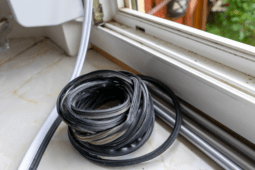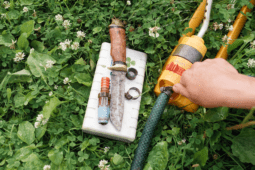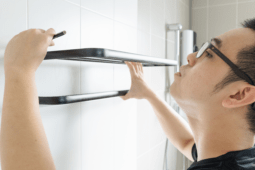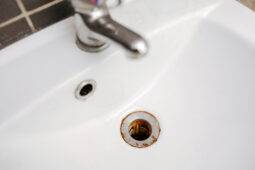ManMade Essential Toolbox: The Best Woodworking Clamps for Big Jobs
Each week in 2015, ManMade is sharing our picks for the essential tools we think every creative guy and DIYer needs. We’ve selected useful, long-lasting tools to help you accomplish a variety of projects, solve problems, and live a hands-on lifestyle that allows you to interact with and make the things you use every day.
 Last week we talked about the 5 essential small clamps every DIYer should own. The post was an overview of the various clamps we use on just about every project. Today, we’re going to focus on which clamps we grab for the large glue-ups where holding pressure and stability are important for a flat and solid glue-joint.
Last week we talked about the 5 essential small clamps every DIYer should own. The post was an overview of the various clamps we use on just about every project. Today, we’re going to focus on which clamps we grab for the large glue-ups where holding pressure and stability are important for a flat and solid glue-joint.
As we said in the last post on this subject, quality here really matters. Clamps that don’t bind or warp, slide smoothly and deliver consistent pressure are very important for a good result. This is especially on large glue-ups where cure time means having the entire project cinched down before the glue gets too tacky to work with.
I bought my set of 6 large pipe clamps for a 4×8 dining room table made with white oak. The project called for large glue-ups on the top that needed the reach and pressure of a massive 4′ clamp. Since then, I pull them out about once a month for a large glue-up.
There are a few types of big clamps that all serve a similar purpose, but have a few interesting differences. Let’s get gluing.
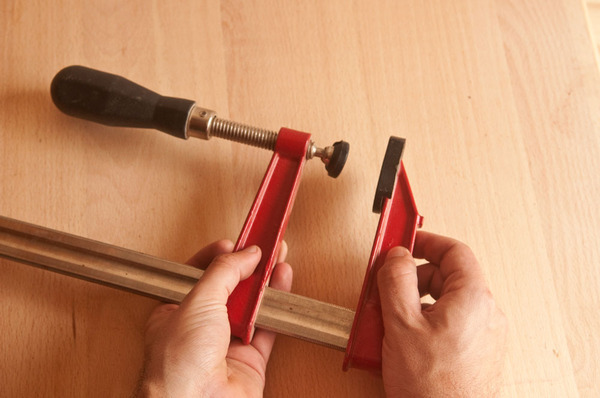
1. The Bar Clamp
We highlighted the little brother versions of these in the last post, but the larger versions of this focused clamp is just as useful. The small jaws allow it to be positioned directly where force is required without getting in the way. The long reach and low profile does have the drawback of not providing as much pressure (about 800 lbs) as the more robust parallel clamps (about 1500lbs). I find myself using them to cinch up a joint in a very small area while the other clamps do the heavy lifting.
I’d recommend at least 4 (36″-48″) for most projects.
ManMade Recommended:

2. The Parallel Clamp
For serious jobs, this is the best clamp money can buy. The parallel clamp has two faces that provide parallel force and plenty of it. The long bar on this clamp supports the workpiece at a 90 degree angle so the joint comes out flat and strong. The main challenge with this clamp is the weight, each one weighs in at about 8 lbs so hefting it around the shop is a pain. If you’re planning on building cabinets, panels, or tables, these are the best choice. They’re pricey, but for good reason. They work.
Buy at least 12″ larger than you plan on needing, the extra length is always nice to have available. We recommend at least 2 (48″), but four would be awesome if you’ve got the budget.
ManMade Recommended

3. The Pipe Clamp
The pipe clamp is a different version of the parallel clamp, for those with the need but not the budget. Pipe clamps provide the flat clamping power (about 1200 lbs+) of a parallel clamp, but can be threaded onto various lengths of steel plumbing pipes for a variety of jobs. These clamps are an ideal budget friendly option for the small shop without much space for clamp storage. The clamp is basically two pieces, a head and tail that slide onto any length threaded pipe. That’s where the versatility comes from, as they can be changed over from a 24″ clamp to a 48″ clamp by just buying a different length pipe. The drawback to the pipe clamp is a bit more of a messy configuration compared to the clean and smooth parallel clamp, also the head and tail have a bit more play so the clamping faces are harder to line up perfectly parallel. And they’re crazy heavy. But they do they job, and they do it well. The clamps come in both 1/2″ and 3/4″ sizes, I would recommend the larger 3/4″ as they provide the best pressure without flexing. I have 6 pairs and about 12 pipes (4 each – 36″, 48″, 60″) in my shop and I still could use a few more. Side note – Tape the exposed threads after you put on the clamps, I’ve sliced my head open twice on the sharp edge.
ManMade Recommended

Final thoughts:
1. Stay away from aluminum clamps, they’re lighter but flex and warp under pressure.
2. Buy an additional set of pads when you pick up a clamp, you’ll need them.
3. A strip of tape along the bar under a project keeps glue from sticking to the clamp, peel off the tape and any glue squeeze out is gone with it. Black steel can also stain the wood, and the tape can prevent that easily.
ManMade Recommended:
Bar Clamps
Parallel Clamps
Pipe Clamps

